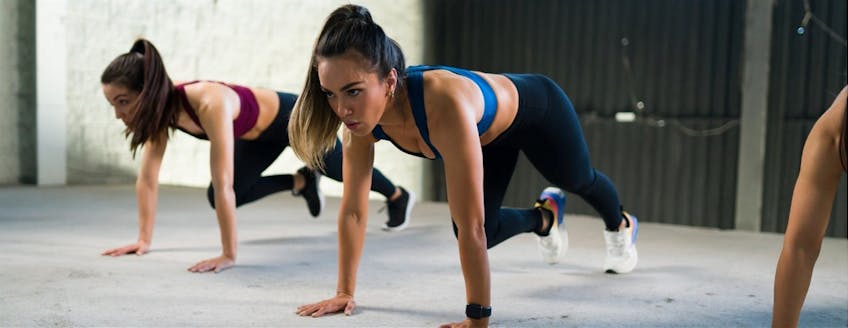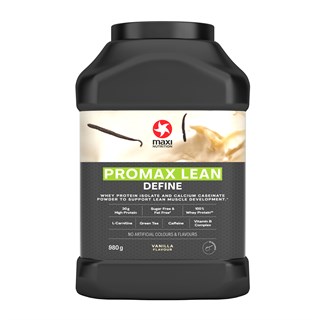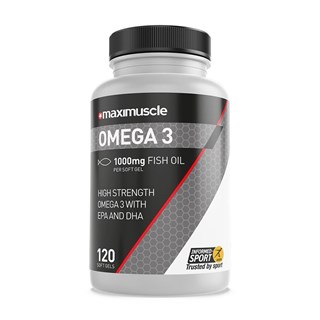Are you swimwear ready?
It’s that time of year, when the weather starts to brighten up and summer is just around the corner. For many of us, this is a double edge sword, as it’s a reminder or realisation that those extra pounds gained over the winter months, need to be significantly reduced before donning the swimwear. Once again, we are faced with that age old question, of which exercise is best to help burn body fat and sculpt your desired holiday body. I’m Gareth Nicholas, resident nutritionist for MaxiNutrition. Let me help dispel some myths and set you on the right path towards a healthier, fitter, leaner you..
Confusion and complication sells
Just scrolling through social media, and you are inundated with lots of buzz words and packages that guarantee you success. Don’t do this, stop doing that, metabolism boost, fat burning sessions, blah blah blah. Truth be told, creating a calorie deficit through any type of exercise and following a calorie restricted diet, will create the right environment for you to burn body fat. Less in, more out!
That’s one way to look at things, but we are humans and often complicated folk. Finding the right approach for you to lose body fat and importantly keeping that weight off, is likely to be different from person to person. What are your motivations? What constraints do you have? How much weight do you want to lose? What is your starting point? These are just a few considerations that might change what works and doesn’t work for you.
Do I need to do hours of cardio?
No, not if you don’t want to. Hitting the treadmill for hours will burn calories and potentially use (stored) fat as an energy source, but it’s time consuming. Just 1 kg of body fat requires at least an energy expenditure of 9000 kcal (approximately 13 hours of running); that’s a long time to be pounding the treadmill.
Enter the world of interval training, HIIT (High Intensity Interval Training). Fact! - working harder for a shorter duration, not only burns calories at a higher rate, but forces your body to continue burning calories after that session (increasing the metabolic effect). As an example, rather than steady state running for 45 minutes, completing a HIIT running workout for 20 minutes will likely provide better health, performance and calorie burning results. Thinking about it logically, you are working harder, although the absolute time is less, the overall outcome will be matched or improved. (These are just arbitrary numbers to provide an example of the exercising energy expenditure.)
Is it all about HIIT?
You can apply the HIIT philosophy to any form or modality of exercise. The crucial part, is that you switch between work and rest (hard work then less hard (easy)), with an overall shorter workout duration. Participant Warning - You should build up to the lung busting going all-out exercise, to avoid breaking your spirit and motivation in the early stages or causing injury. That said, habit forming research has shown us that we are more likely to stick with a HIIT style regime versus those long steady cardio workouts. But is HIIT the only answer? Here’s a few facts:
- HIIT improves resting metabolism and reduces blood pressure in overweight individuals.
- HIIT is time efficient way to improving cardiovascular fitness.
- HIIT may not provide greater body fat reductions than continuous cardiovascular training but results will occur in a shorter time frame.

What about the fat burning zone?
It’s true that the lower the working heart rate, the body will turn more to fat as a fuel source. As that heart rate rises, fat is unable to sustain the desired energy output and there is an increased demand in the readily available glycogen (carbs). Before you say it, yes, you would be right in thinking that you are likely to burn more fat if you exercise at a lower intensity for a longer duration, but that’s just taking exercise in isolation. In truth, energy expenditure is more of a dimmer switch than it’s a typical on/off switch. We are using a variety of energy sources at different amounts and depending on the duration, intensity and type of training will determine the amount of each energy source required.
What we also know from conducting HIIT and resistance training is that more of the body is being used, so more global energy expenditure both during and following exercise. This elevated metabolism continues for at least 24 hours following exercise. Coincidently, the same is said in the fat loss response from running versus cycling. Running being the winner here, due to more muscle mass recruitment and a greater energy expenditure. But that doesn’t mean that cycling won’t help you lose weight or that cycling is not a good form of exercise.
What is the best method of training for you?
“Horses for courses”, I started this article by stating that the crucial part to fat loss is creating a calorie deficit. What we also know, is that diet is more effective than exercise for weight loss, although exercise is more effective for decreasing body fat. Combining both a calorie restriction with exercise, and more specifically completing both aerobic and resistance exercise, typically seen in HIIT circuit sessions, provides greater weight loss, fat loss and cardiovascular fitness. It’s not as simple as saying something is better than nothing, but that’s definitely a great starting point.
















